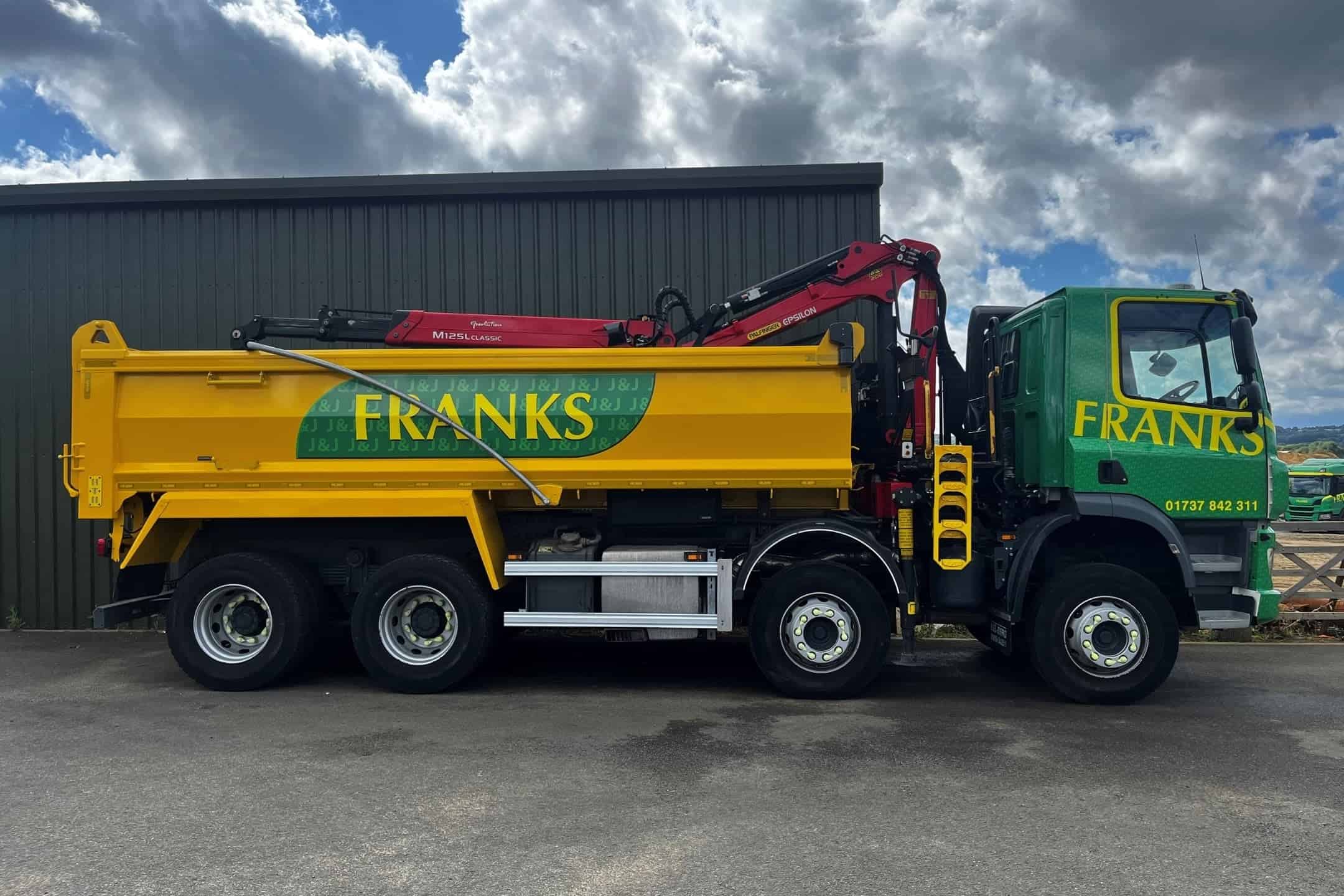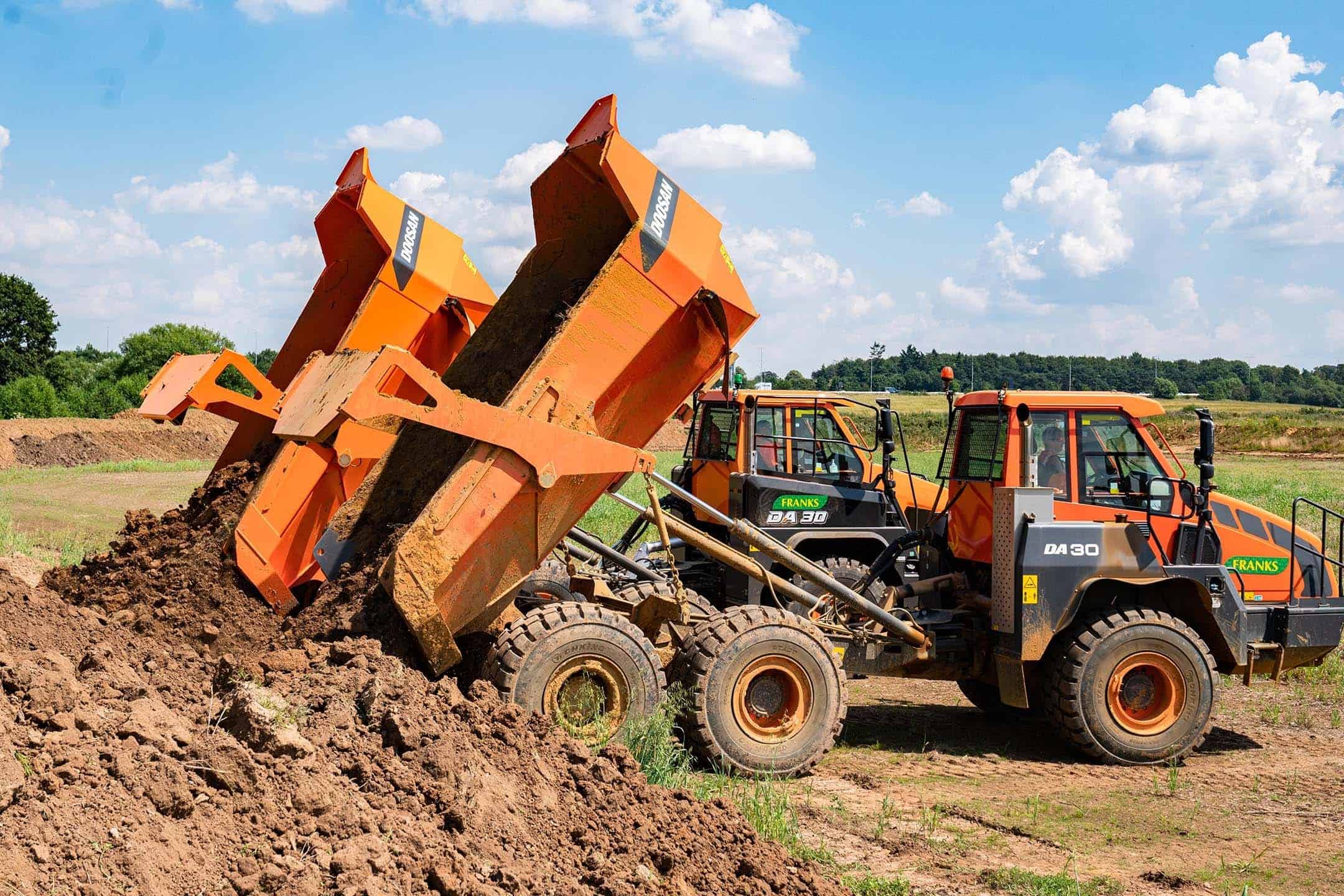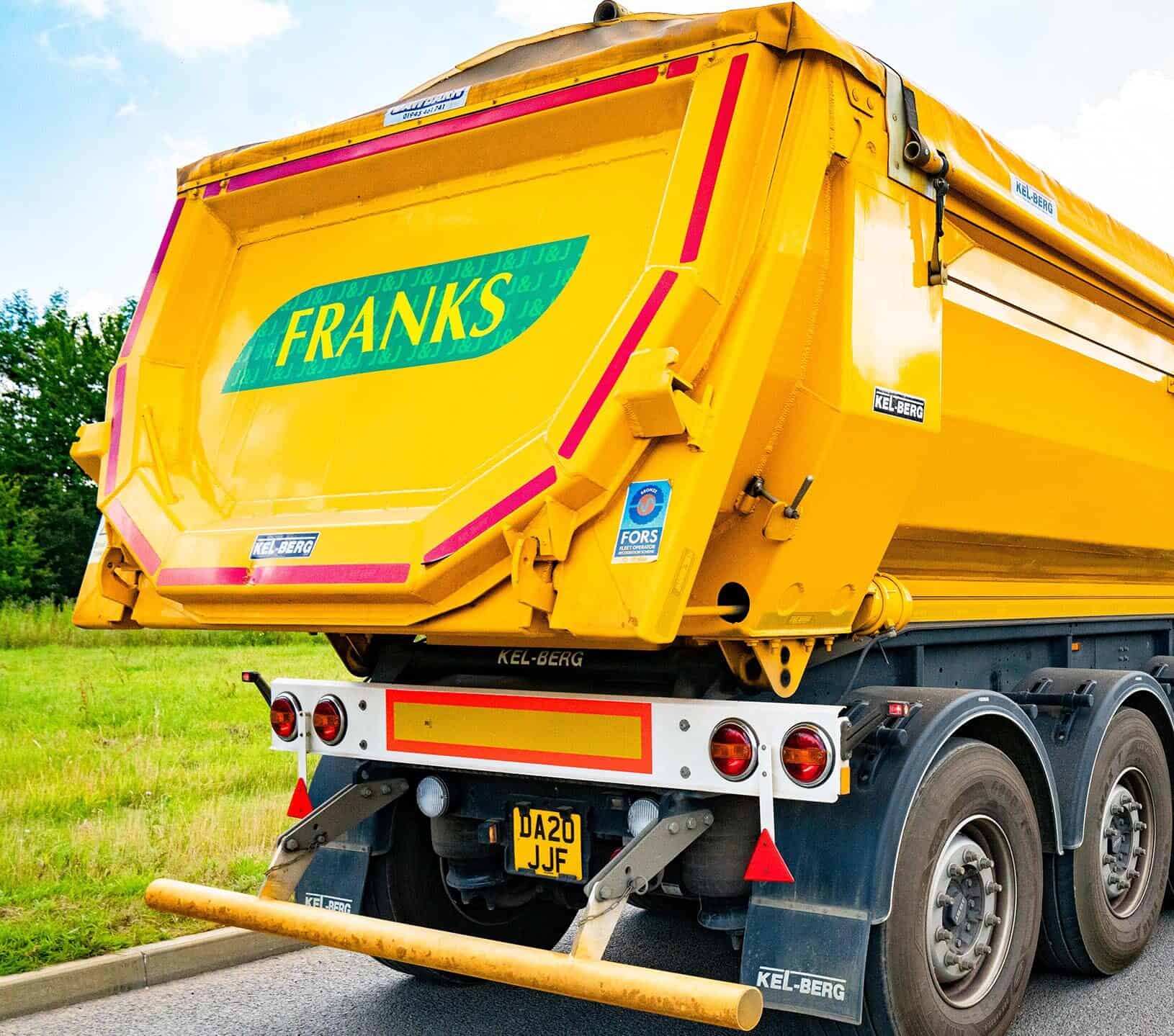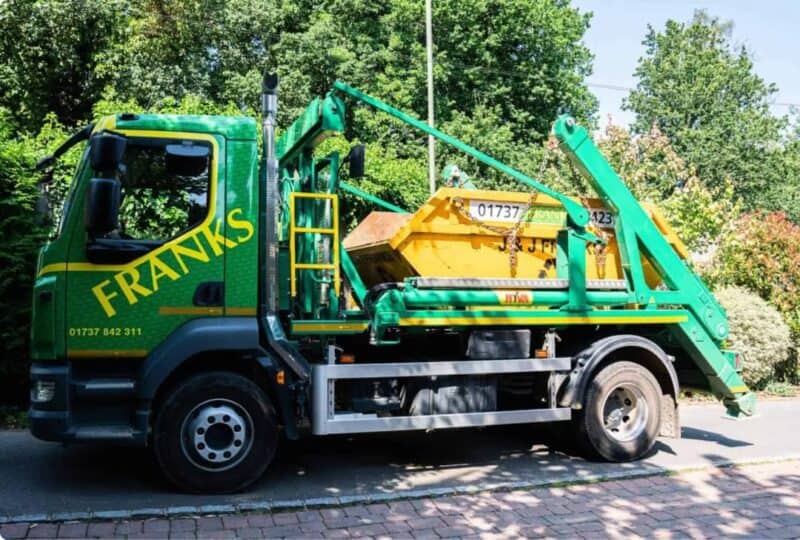In waste management, choosing the right type of vehicle is essential to the efficiency and success of a project. Two common options are grabber lorries and tipper lorries, each offering unique advantages based on the nature of the waste and the project requirements. Understanding the differences between grabber and tipper lorries, as well as the types of waste they handle best, will help you make an informed decision for any construction or commercial site.
What are Grabber and Tipper Lorries, and How Do They Differ?
Grabber and tipper lorries are both indispensable in waste management but serve different purposes. Grabber lorries are equipped with a hydraulic arm and bucket, which can lift waste from the ground and load it directly into the vehicle. This makes them especially useful for collecting materials such as soil, rubble and bulky items, as they can access difficult to reach places without needing a loading dock. Tipper lorries, on the other hand, don’t have a grab arm so rely on other plant machinery to load the vehicle. Tippers transport large volumes of loose material such as sand, grave, or demolition waste. They unload by tipping the contents from the rear, which is useful for efficiently depositing materials in a designated area.
The primary difference lies in their loading and unloading methods. While grabber lorries can pick up waste from the ground with ease, tipper lorries require a clear area for dumping, as their tipping abilities are best suited for depositing bulk materials in one spot, for example, building sand, or topsoil. This makes grabber lorries ideal for sites with obstacles or limited space, while tipper lorries are better for transporting larger quantities of loose materials.
What Types of Waste Are Best Suited for Grabber and Tipper Lorries?
The type of waste being handled can determine which vehicle is more suitable. Grabber lorries are best at managing mixed waste, such as bricks, soil, green waste, and general construction debris. They are versatile in the types of waste they can collect and are often deployed on projects where quick waste removal is required. For example, if you’re clearing a site with various materials scattered across different areas, a grabber lorry can efficiently collect them all.
Tipper lorries are more specialised and work best for bulk materials that need to be transported and unloaded in large quantities. These vehicles are commonly used on construction sites to carry aggregates, hardcore, and soil. The ability of tipper lorries to quickly offload materials makes them perfect for delivering resources to a worksite or removing large piles of uniform material, like sand or gravel, with minimal downtime.

Advantages of Using a Grabber Lorry for Waste Removal
Grabber lorries bring significant advantages, particularly for projects where access is important. The hydraulic arm enables grabber lorries to reach over fences, walls, and other obstacles, allowing them to remove waste from challenging spaces. This means they can operate on sites with restricted access or limited room, making them ideal for urban areas or smaller sites where a traditional skip might not fit.
Efficiency is another major benefit, grabber lorries can handle various waste types without the need for manual loading, which reduces the time and labour required on site. Additionally, our grabber lorries at J&J Franks allow for on-demand collection. Whether you have a sudden need for waste removal or a planned project, they can be deployed quickly, and their swift operation helps keep the site clean and safe.
Advantages of Using a Tipper Lorry for Waste Removal
While grabber lorries are suited for mixed waste, tipper lorries excel in their ability to transport and offload bulk materials rapidly. Tipper lorries can carry substantial volumes of loose materials, and with their tipping function, they can unload quickly, helping to streamline operations. This is especially beneficial for large construction projects where large quantities of material need to be moved regularly.
Tipper lorries are also cost-effective for transporting aggregates and other bulk materials. By reducing the need for multiple trips, they can lower transport costs and make the overall process more efficient. If your project requires frequent transportation of similar waste types to or from a site, a tipper lorry can provide significant savings in both time and expenses.
Factors to Consider When Choosing Between Grabber and Tipper Lorries
When deciding between a grabber and a tipper lorry, consider the specific requirements of your project and the site. The type of waste is a key factor, if you’re dealing with mixed waste or need flexibility in handling various materials, a grabber lorry offers more versatility. However, if the project involves transporting large volumes of loose materials like sand or gravel, a tipper lorry is likely the more practical choice.
Finally, the project scale and budget can influence your choice. Tipper lorries are generally more cost-effective for large projects that require bulk transportation, while grabber lorries can reduce labour costs and provide quicker turnaround for smaller, complex projects. If you’re choosing a tipper lorry, it’s important to think about how you intend to load the vehicle.
Both grabber and tipper lorries play essential roles in waste management, and each has distinct advantages depending on the project requirements. By understanding the differences between these vehicles and considering your project’s specific needs, you can select the right option to ensure effective and efficient waste removal.
At J&J Franks, we offer a range of grabber and tipper lorries, providing tailored solutions to meet the unique demands of your site. Contact us to discuss your waste management needs, and let us help you choose the most suitable option for your project.









